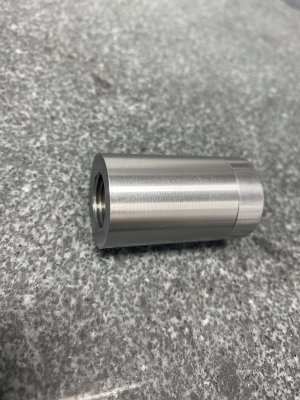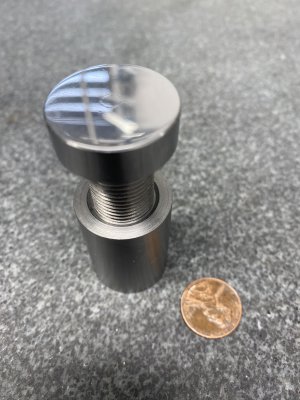- Joined
- Mar 26, 2018
- Messages
- 8,406
One of my favorite YouTube channels is Joe Pieczynski.
He is a great teacher imho.
As a hobby machinist with little practical experience, I am always learning.
Therefore, I watched this video, “Single Point Threading, Want to do it better?” By Joe Pi.
In this video, Joe says, “If someone walks into my shop and asks, how deep should I cut this thread, throw him out”.
”Threads are not driven by the depth of the thread”.
I guess if you own a thread mic., put it away?
He explained to me the method to use is the 3-wire and follow the machinists handbook and the instructions that come with the thread wire kit.
This experience has given me confidence moving forward with respect to single point threading and learning more about threads.
Did you know the 2A is for external or “air” threads? did you know the 2B threads are for the “bore” or internal?
I do now.
The pics show my latest project, a smaller machinists jack. I cut the threads 5/8 x 18 UNF. I’m I followed the 2A specs. I put it in the imaginary mail and received the external thread portion to fit into my internal machinist jack base that I cut using a commercial tap.
It fits perfectly with no slop and smooth as glass. Did I get lucky or is this why there are published standards.
He is a great teacher imho.
As a hobby machinist with little practical experience, I am always learning.
Therefore, I watched this video, “Single Point Threading, Want to do it better?” By Joe Pi.
In this video, Joe says, “If someone walks into my shop and asks, how deep should I cut this thread, throw him out”.
”Threads are not driven by the depth of the thread”.
I guess if you own a thread mic., put it away?
He explained to me the method to use is the 3-wire and follow the machinists handbook and the instructions that come with the thread wire kit.
This experience has given me confidence moving forward with respect to single point threading and learning more about threads.
Did you know the 2A is for external or “air” threads? did you know the 2B threads are for the “bore” or internal?
I do now.
The pics show my latest project, a smaller machinists jack. I cut the threads 5/8 x 18 UNF. I’m I followed the 2A specs. I put it in the imaginary mail and received the external thread portion to fit into my internal machinist jack base that I cut using a commercial tap.
It fits perfectly with no slop and smooth as glass. Did I get lucky or is this why there are published standards.



